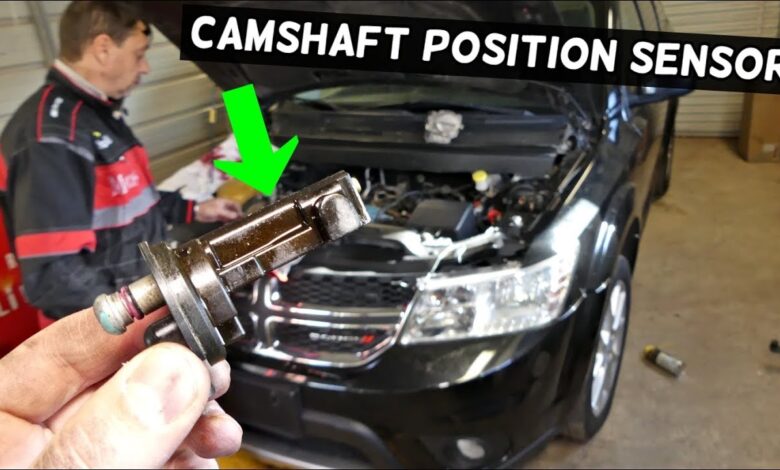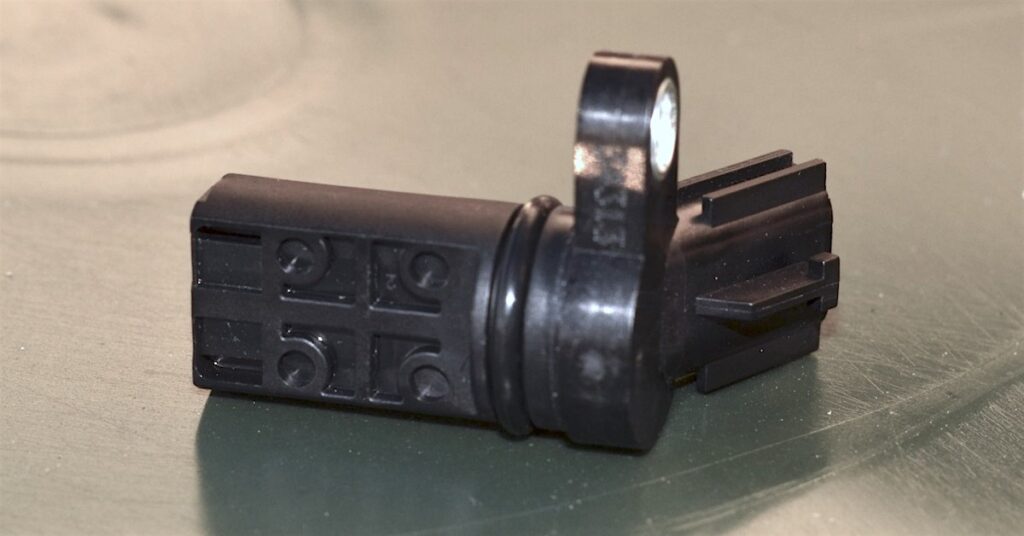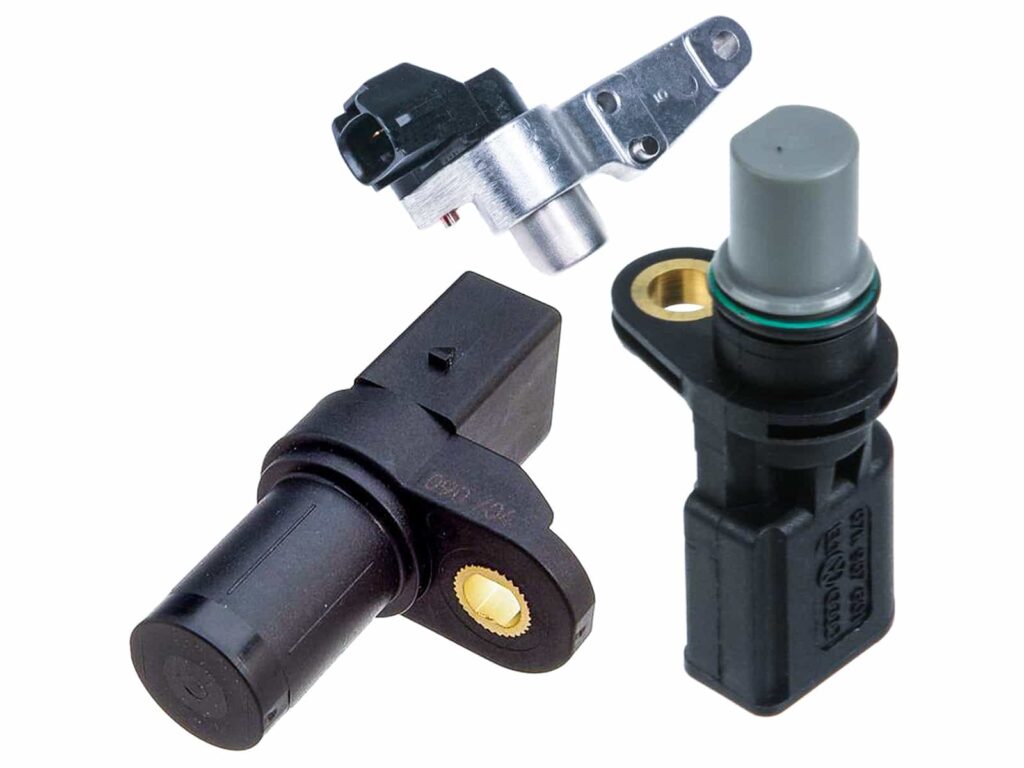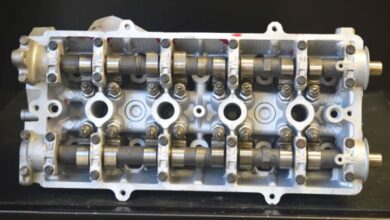7 Things To Know About How To Reset Camshaft Position Sensor

Sensors are important components in combustion engines because they collect valuable data about engine parts and their operation sending them to other components to execute commands as they are used. To better understand this issue, follow the article 7 Things To Know About How To Reset Camshaft Position Sensor.
Where is the camshaft position sensor located?
The engine’s camshaft position sensor helps monitor the rotation of the camshaft and to ensure fuel, air, and ignition supply commands are sent at the right time.
The electronic control unit can receive signals from the camshaft position sensor, thereby knowing the position of the camshaft and calculating which action command to send to the cylinders correctly.

The camshaft position sensor is located near one cylinder head, where the camshaft is located. The ideal location is near the camshaft and the sensor can work efficiently during use.
This is the first information in 7 Things To Know About How To Reset Camshaft Position Sensor.
Is it safe to drive with a faulty camshaft sensor?

It is certainly not safe, even very dangerous to drive with a faulty camshaft sensor. The camshaft position sensor greatly affects the performance of your car’s engine during travel.
It affects the fuel supply to the vehicle’s engine. A faulty camshaft sensor very easy to sends wrong information causing your car to stall, so this is very dangerous.
This is important information in 7 Things To Know About How To Reset Camshaft Position Sensor.
Causes of camshaft position sensor error
The following are the factors that will cause your camshaft sensor to fail that 7 Things To Know About How To Reset Camshaft Position Sensor sends you:
– Dry and worn
– Hot or too hot
– Affected by water
– Too much engine oil
– Corrosion metal parts
– Circuit is damaged
– Affected by sparks
– Other physical damage
Is it possible to replace the camshaft position sensor myself?

You can replace the camshaft position sensor yourself as it’s a fairly simple process. First, you need to make sure that you have purchased a new sensor from a reputable dealer to get the right product. A camshaft sensor will cost $25 to $100 and it takes 10 to 20 minutes to replace a camshaft sensor.
Steps to replace the camshaft position sensor include:
– Disconnect the negative terminal of your car. This stops the power supply to various parts of the car.
– Determine the position of the camshaft sensor. It is usually located on the top part of the engine cylinder head. But can also be above, behind, or in front of the engine. The sensor will also have 2 or 3 connection wires included.
– To disconnect the connector wires, you need to release the tab of the sensor.
– The sensor requires a bolt to attach to the car engine. Remove this mounting bolt that is 8 to 10mm in size and it varies from vehicle to vehicle.
– By a slight twist, you will pull the camshaft sensor ff.
– Take your new sensor and use a bit of engine oil then lubricate its o-ring.
– Next, you need to mount your new camshaft to the engine and use the bolts to secure it in place.
– The next step is to return the connecting wires to their original positions.
– Finally, reconnect the negative terminal of the battery.
Is the camshaft position sensor the same as the crankshaft sensor?
The answer to 7 Things To Know About How To Reset Camshaft Position Sensor is No. The camshaft position sensor is nothing like the crank sensor you might think.
Both sound almost similar but their meanings are different. So are their internal functions.
As the name implies, the camshaft position sensor is directly related to the engine’s camshaft. Most of the functions of this sensor are related to the camshaft.
You can simply understand it as the process of taking signals about camshaft movements and sending them to the car’s electronic control unit to determine fuel and ignition requirements.
On the other hand, the crankshaft position sensor is linked to the engine’s crankshaft. That’s when a sensor detects the speed of the crankshaft when accelerating.
The sensor sends important information about the crankshaft motion to the engine control unit. The reason is that the crankshaft controls the movement of the vehicle by rotating the wheels, the information generated allows the vehicle’s system to determine the required power to operate.
Signs of a faulty optical sensor
1. Ignition problem
The camshaft position sensor transmits important signals to the car’s computer system or ECU. The ECU system then determines when to issue the fuel injection or ignition command.
As a result, when the camshaft position sensor fails, it sends a slow or no signal, affecting the ignition of the system.
Without the camshaft position sensor sending these vital signals to the car’s ECU, the ignition command would not be sent so there would be no engine ignition.
2. Check Indicator Light or Engine Indicator
The check engine light is the first thing you get when your camshaft position sensor has a problem. However, the “Check Engine” light can also have many other meanings.
For this case, the best thing you should do and any professional mechanic would do is diagnose the vehicle, get the correct code, and explain what the problem means.
When you notice this, find a tool to scan the code or a professional mechanic who can do it for you.
3. Engine stops working
Engine stalling can also signal a faulty camshaft position sensor. When the camshaft position sensor fails, it cannot send the right information to the ECU system at the right time.
However, this delay also delays the instructions to deliver fuel to your car’s cylinders. As a result, your engine continues to stall. This can be dangerous and should be checked quickly.
4. Displacement Issues
Some cars have trouble shifting gears when the camshaft position sensor is faulty. As a result, the car got stuck on one wheel. This is directly related to the supply of fuel, air and ignition in the vehicle’s engine during operation.
5. The car is jerked
The effectiveness of the camshaft position sensor often has a direct impact on engine performance. Fuel and engine burn time are affected when the camshaft position sensor fails.
It will cause the car to lose power and jerk due to a delay in the fuel supply process. In this case, miscommunication and malfunction are sent to the fuel injection system thereby burning energy and lacking power.
6. Poor acceleration
When you accelerate the car, the demand for fuel into the engine will increase rapidly. When everything is working properly, commands will be sent within a minute and the fuel injection system can supply fuel to the vehicle.
However, a faulty camshaft position sensor will delay or fail to send information affecting fuel delivery and therefore poorer acceleration.
7. Poor fuel consumption
All the signals sent by the camshaft position sensor are very important in determining when and how much fuel enters a car’s engine cylinders.
As a result, when the camshaft fails and sends the wrong information, the wrong amount of fuel is also supplied. Coupled with the wrong ignition timing, too much fuel will be wasted and you will experience poorer than usual fuel economy.
Hopefully the article 7 Things To Know About How To Reset Camshaft Position Sensor will provide useful information for you.
Thanks for reading!
Read more: Kia EV6 2023 Review And The Most Detailed
Conclusion: So above is the 7 Things To Know About How To Reset Camshaft Position Sensor article. Hopefully with this article you can help you in life, always follow and read our good articles on the website: BIRA.INFO



